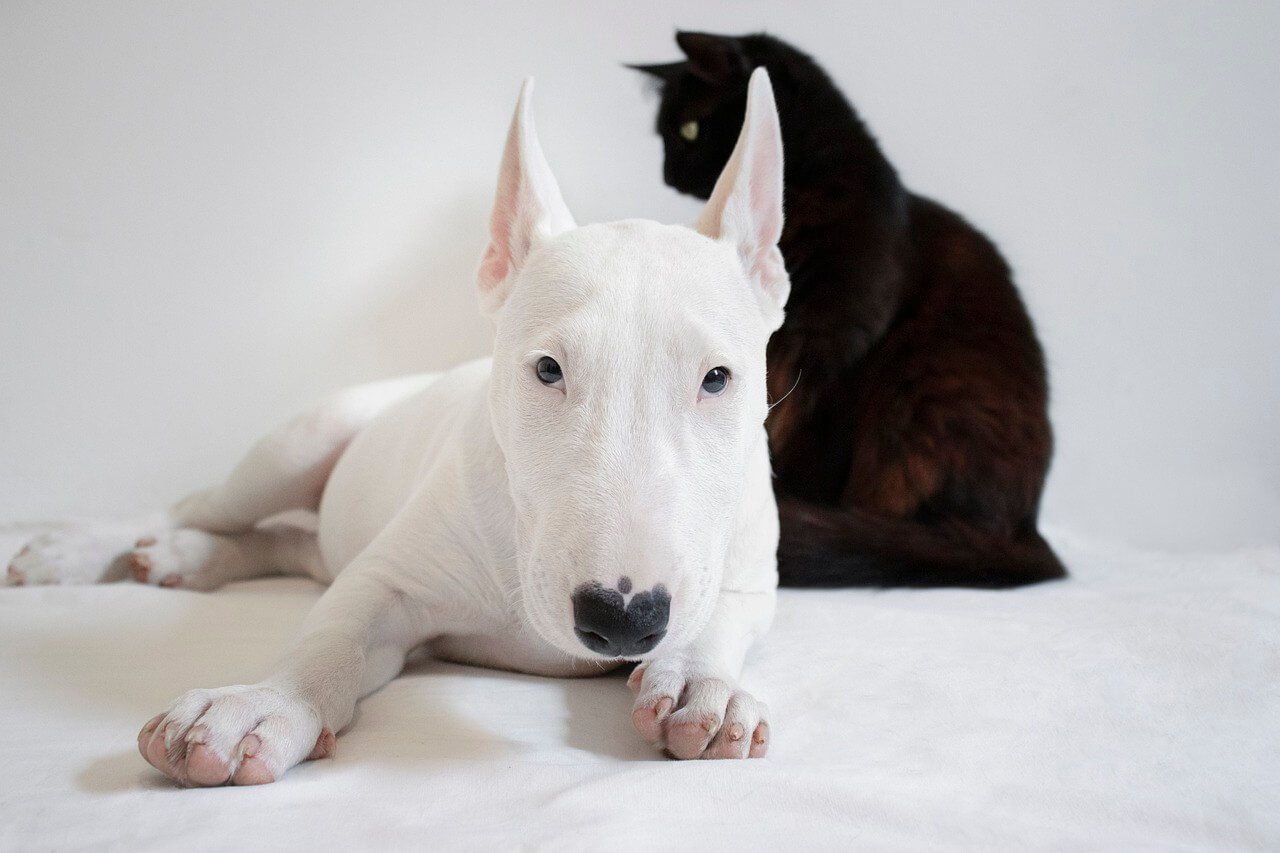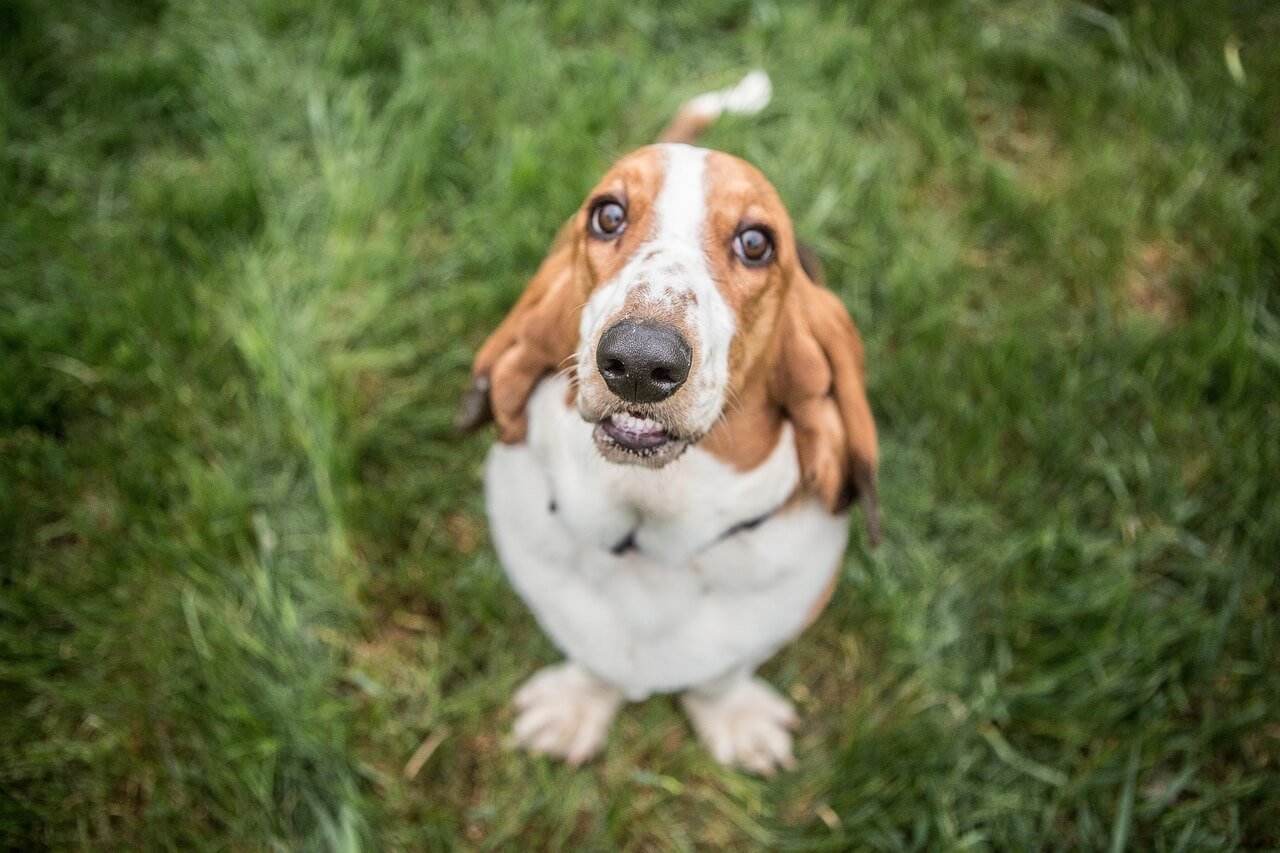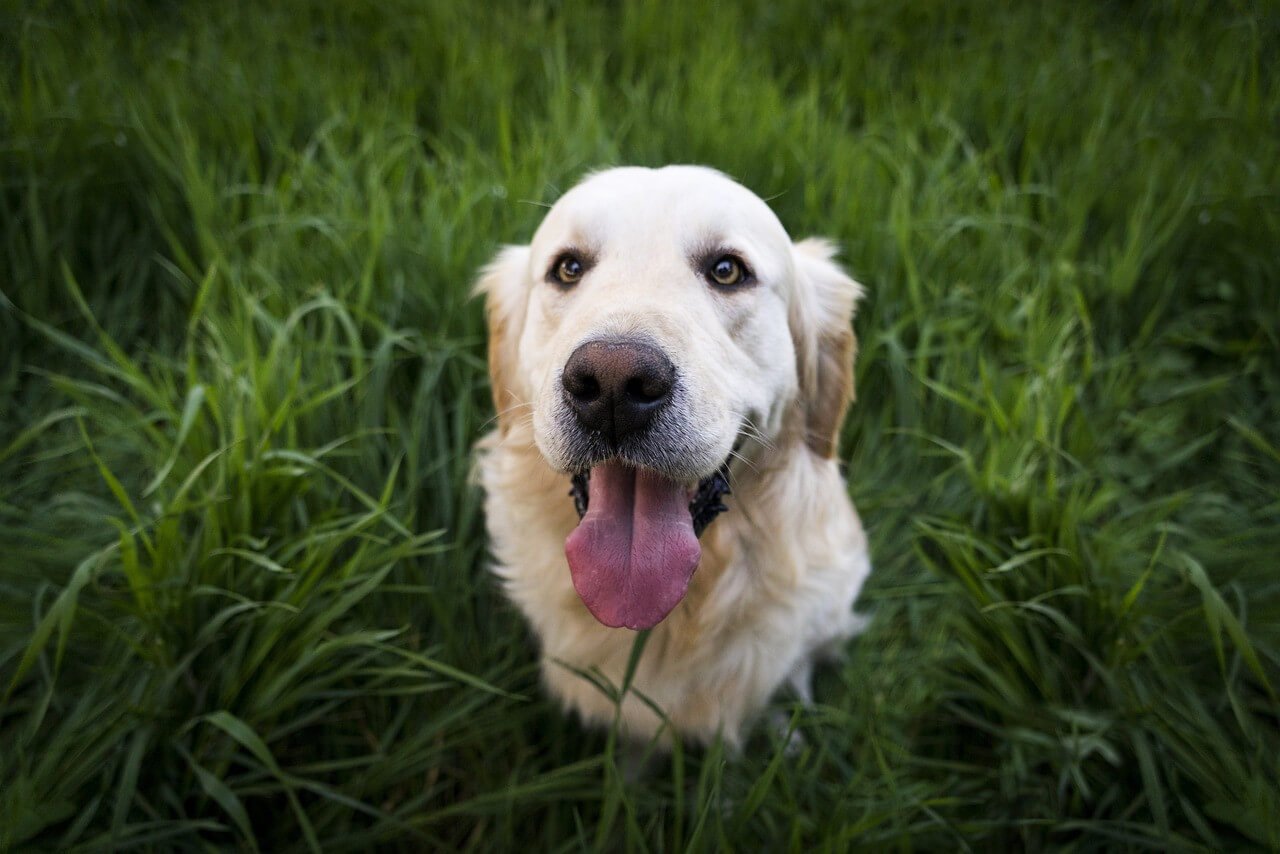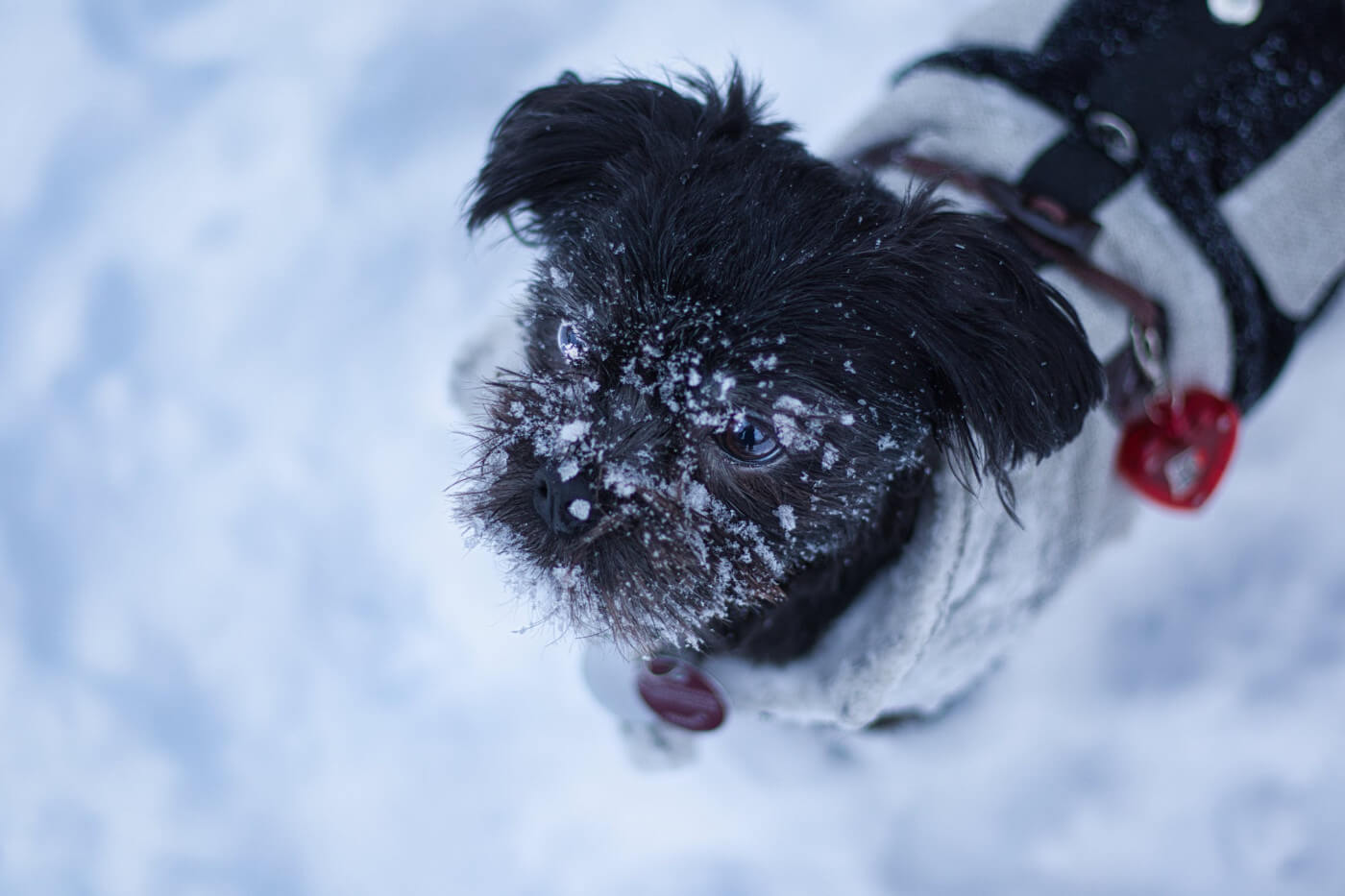The Bull Terrier is an lively dog breed that's famous, for its playful nature and loyalty as well as its unique appearance with a rounded head and strong physique. It is known to be a companion for people who enjoy having an loving pet by their side. Whether you are new to owning a dog or thinking about getting yourself a Bull Terrier puppy this handbook provides details about the characteristics of Bull Terriers their care requirements, training suggestions, and insights, on maintaining their health.
History and Origin of the Bull Terrier
The Bull Terrier has a rich history, tracing back to 19th-century Britain. Bred originally for bull baiting and other blood sports, they are a blend of English Bulldogs and the now-extinct White English Terrier. Known as the first modern Bull Terrier, they were crafted by James Hinks as a gentleman's companion with a unique look and temperament. While their early history includes sporting activities, modern Bull Terriers are primarily known for their loyalty, affectionate nature, and love of play.
Bull Terrier Physical Characteristics
The Bull Terrier is one of the most visually recognizable dogs in the terrier group, known for its unique egg-shaped head, muscular build, and triangular eyes that give it a sharp yet charming expression. James Hinks, the father of the modern Bull Terrier, bred this dog in the 19th century by crossing the white English Terrier with Bulldogs and other breeds to create a stylish and bold companion—one that was originally bred for bull baiting, but has since evolved into a loyal family member.
Size and Build
There are two recognized sizes: the standard Bull Terrier and the Miniature Bull Terrier, a miniature version with all the same energy packed into a smaller frame. Regardless of size, this dog breed is sturdy, athletic, and built for action. Males typically weigh between 50–70 pounds, while female Bull Terriers tend to be slightly lighter but just as powerful.
Their bone structure is thick and compact, supporting rapid growth during puppyhood. That’s why proper bone development, supported by high quality dog food rich in natural calcium, is essential—especially at a young age.
Coat and Colors
A Bull Terrier’s coat is short, flat, and dense, offering a glossy finish that’s easy to maintain with regular exercise and grooming. They come in several striking varieties:
The classic white Bull Terrier, sometimes with colored markings on the head or ears
Colored Bull Terriers, which may include brindle, red, black, or tricolor combinations
A colored variety is often preferred for those looking to stand out in shows held by the American Kennel Club or Bull Terrier Club events
Their white dogs are known for their clean, sharp look, but colored bull terriers may be less prone to certain health issues like deafness that sometimes affects lighter-colored breeds.
Bull Terrier Temperament & Personality: Spirited, Strong-Willed, and Sweet-Hearted
The Bull Terrier might look tough, but behind that egg-shaped head lies one of the most playful, clownish, and affectionate personalities in the terrier group. These dogs are famous for their fun-loving attitude, boundless energy, and deep devotion to their family members.
Originally part of a breed bred for bull baiting and later dog fighting in the 19th century, today's modern Bull Terrier has been transformed through generations of proper training and selective breeding into a charming, mischievous, and highly intelligent companion.
Smart, Stubborn & Full of Personality
One of the most defining traits of this dog breed is its independence. Bull Terriers are known to be headstrong and bold—sometimes to a fault. They require consistent training from a young age, or they may develop pushy or overly dominant behaviors.
That’s where obedience training, early socialization, and human interaction come in. With structure and firm (but kind) leadership, Bull Terriers become incredibly responsive and loyal. While not the easiest breed for first-time owners, they’re incredibly rewarding for those who enjoy a challenge.
Pro Tip: Incorporate positive reinforcement techniques and interactive play to avoid boredom-driven behaviors like chewing or digging.
Family Dogs with a Protective Edge
Many Bull Terriers bond deeply with their family members and love being part of daily activities. They’re often called “shadows” because they’ll follow you around the house, from the kitchen to the couch.
They’re excellent with small children when properly trained, though their high energy means supervision is always a good idea. Their strong personalities can make them potentially aggressive toward other dogs—particularly of the same sex—if they haven’t been socialized early on.
That’s why early socialization with other animals, people, and new environments is critical.
Playful, Not Passive
Despite outdated stereotypes linking them to pit bull dogs, American Staffordshire Terriers, and Staffordshire Bull Terriers, the Bull Terrier is far from a passive house pet—but they’re definitely not a threat when raised with love and structure.
These are not dangerous dogs, but they are powerful dogs who need regular exercise, mental stimulation, and loving discipline. Without it, even the most terriers can act out, especially those with strong-willed streaks.
Health & Care for Bull Terriers: What Every Owner Should Know
The Bull Terrier is a generally healthy and resilient dog breed, but like all terrier group members, they have their own set of health quirks and care needs. Whether you have a Miniature Bull Terrier, a white Bull Terrier, or one of the colored bull terriers, understanding their specific wellness requirements is essential to keeping them happy and thriving.
Common Health Issues
Bull Terriers are muscular and athletic by nature, but selective breeding over the years has introduced a few health issues to be mindful of:
Deafness is more common in white Bull Terriers, especially those with no colored markings
Skin allergies and sun sensitivity can also affect white dogs
Kidney issues and heart murmurs may occasionally appear in certain bloodlines
Joint or bone development concerns are common during rapid growth phases, especially in bull terrier puppies
Pro Tip: Choose a vet-recommended high quality dog food rich in natural calcium to support healthy growth and strong joints during the early months.
Nutrition: Fueling the Fun
Feeding your Bull Terrier the right food is non-negotiable. Their active bodies and intense play style demand proper nutrition for muscle health, digestion, and coat shine.
What to look for in your dog food:
Protein-first formulas for muscle maintenance
Omega fatty acids for a healthy bull terrier’s coat
Easily digestible ingredients for dogs with sensitivities
Adequate minerals for bone development
Many Bull Terrier owners lean toward breed-specific formulas or premium recipes formulated for medium to large dogs with athletic builds.
Grooming & Skin Care
Thanks to their short, sleek coat, Bull Terriers are low-maintenance when it comes to grooming. But don't be fooled—regular care is still needed.
Brush once or twice a week to remove loose fur and keep the coat glossy
Bathe as needed using gentle, dog-safe shampoo
Keep an eye out for dry patches, rashes, or unusual bumps, especially in white dogs
For Bull Terriers with allergies or sensitive skin, protective gear like a lightweight dog suit can help shield them during outdoor play or post-bath downtime.
Exercise & Mental Stimulation
These aren’t couch potatoes—they're athletes. To keep your Bull Terrier mentally balanced and physically fit, you’ll need to prioritize:
Daily walks and active playtime
Interactive toys and puzzles for mental enrichment
Agility training or fetch to channel their energy constructively
A bored Bull Terrier is a destructive Bull Terrier. If left without stimulation, they may chew furniture, dig, or engage in rough play with other dogs.
Plush Lamb Squeaker Toy Dog Interactive Toy

75,00 kr
115,00 kr
Treat your friend to fun and coziness, with our Cute Sheep Squeaker Plush Toy. Suitable for dogs of any size this charming and huggable toy is crafted to entertain, engage and offer solace to your pet. Adorable Sheep: Carefully designed… read more
Early Training & Socialization
To prevent behavioral problems and promote confidence, early socialization is key. Expose your Bull Terrier to other animals, different environments, and lots of human interaction from a young age.
Consistent routines, obedience training, and structured discipline go a long way in shaping a well-behaved dog that thrives in any setting—even around small children.
Routine Veterinary Care
Be proactive with:
Annual wellness exams
Hearing and eye screenings (especially in white bull terriers)
Spaying or neutering (as recommended)
Dental care, flea/tick prevention, and heartworm checks
Register your dog with the American Kennel Club or Bull Terrier Club for access to breed-specific health resources and support networks.
Exercise and Activity Level
Bull Terriers are lively, playful dogs who thrive on regular activity to keep both their minds and bodies healthy. They need at least an hour of exercise each day, which can be a fun mix of walks, playtime, and mentally engaging activities to keep boredom at bay. Splitting exercise into a couple of sessions throughout the day can help avoid overexertion, especially since they're always eager to jump into action.
For extra excitement, consider adding some dog sports like agility, tracking, or obedience exercises—Bull Terriers love the challenge! They're also big fans of games and interactive play, making them perfect companions for active families or individuals who enjoy spending time outdoors. These activities not only keep them fit but also help strengthen the special bond you share with your Bull Terrier, adding more joy to your adventures together.
Training and Socialization for Bull Terriers
Proper training and socialization are essential to raising a well-behaved Bull Terrier.
Start Training Early: Begin training at a young age to instill good manners. Bull Terriers are quick learners but can be strong-willed, so a firm, consistent approach is key.
Physical and Mental Challenges: Bull Terriers love games that challenge them physically and mentally. Consider activities like canine sports or puzzle toys to keep their mind active and avoid boredom.
Socialization: Introduce Bull Terriers to other dogs and other breeds early to encourage a friendly, confident personality. Puppy parties and visits to dog parks can be helpful in their social development.
Setting Boundaries: Establishing boundaries at home helps your Bull Terrier understand their role in the family. This promotes a harmonious household, especially with other pets or children.
Conclusion
Bringing a Bull Terrier into your home means welcoming a playful, loyal, and unique companion who will bring joy and excitement to your life. With proper care, training, and socialization, Bull Terriers make wonderful family pets that thrive in an environment that meets their physical and mental needs. Embrace the journey with your Bull Terrier, and enjoy the endless affection, loyalty, and fun they bring to your everyday life.
Read More:https://knoxgilmore.shop/a/blog/how-cold-is-too-cold-for-dogs









